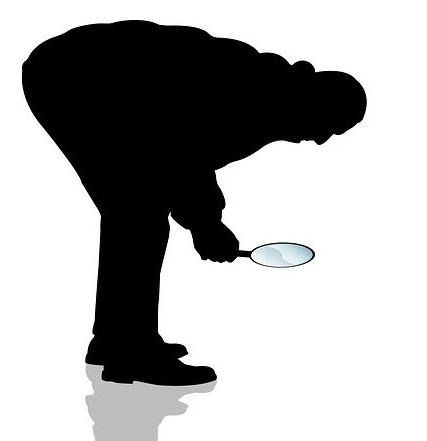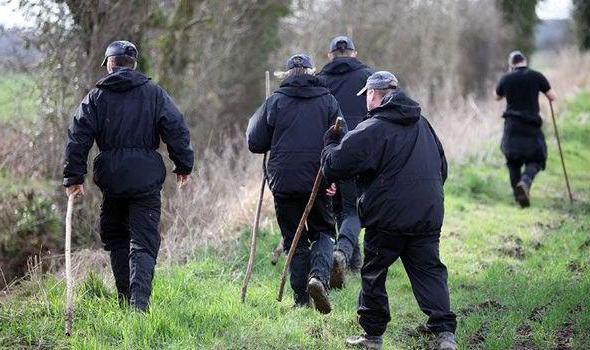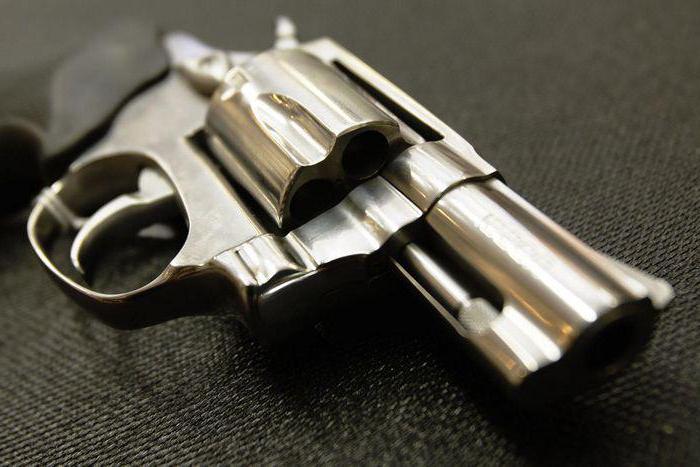A search is an action, the essence of which is a compulsory examination of objects or persons in order to detect and seize (seize) objects, instruments of crime, valuables, documents of importance for criminal proceedings. It is carried out exclusively if there are sufficient procedural and factual grounds. Consider further general search and seizure tactics.

Tasks
Applying search and seizure tactics, authorized employees perform actions aimed at:
- Detection of objects, valuables, instruments of crime, documents of importance for production.
- Capturing the type of objects found. If the inspection of persons is carried out, then the necessary information about them is established.
- Detection of wanted citizens, including deceased.
- Seizure of objects prohibited for sale or relevant to production.
- Fixing the shelter of found objects, caches created to mask and hide the desired items.
- Ensuring the detention of wanted citizens.
Training
Before the immediate implementation of the investigative action, preparation is carried out. At this stage, an authorized employee collects and examines information about the objects sought. In particular, their name, size, quantity, weight, individual characteristics are established. In addition, information about the identity of the subject, which may have objects, is found out. His profession, attitude to production, lifestyle, habits, individual characteristics, daily routine are established. At the preparatory stage, information about the location of the objects is clarified. An authorized employee shall establish the address, access routes, location of premises, and features of the adjacent territory. The officer should obtain as much information as possible in order to apply it as efficiently as possible. search tactics.
Procedural moments
At the preparation stage, an authorized employee must draw up a search warrant. The implementation of the investigative action is coordinated with the prosecutor. If a search must be carried out in a residential building, the clerk sends a petition to the court for a permit. This action is also coordinated with the prosecutor. The next stage is the preparation of search and technical means of fixing the process and the results of the event. Next, the time of the search is determined. Under the Code of Criminal Procedure of the Russian Federation, an investigative measure may be carried out from 06:00 to 22:00. At night, except in urgent cases, searches are prohibited.

Subject composition
The investigator must identify the participants in the search and explain to them their responsibilities. The event may involve:
- The searched subject or adult relative. If they are absent, representatives of the house management and the local government are involved in the procedure.
- The lawyer (defender) of the person whose premises are being inspected.
- Representative of the head of the enterprise in whose territory the search will be conducted
- Operational officer, interrogator. These individuals may assist the investigator.
- Specialist.
- Dog Inspector.
- Witness, victim.
- Witnesses (at least 2 people).
Ancillary workers may also be involved in the procedure for excavations, the movement of overall objects, and so on.
General Tactical Rules and Techniques for Searching
After arriving at the address of the event, the investigator must ensure that the possible ways for people to leave the territory are blocked.For this, security is set at the exits. General tactical rules and techniques for conducting a search are aimed at the prompt detection of persons and objects sought. In this regard, the appearance of authorized employees should be sudden. Otherwise, the event may not bring the desired result. Surprise is considered a key tactical requirement for organizing a search. The unexpected actions of employees prevent attempts to destroy the items sought. TO search tactics apply use of the "legend" to penetrate the territory of interest. Employees can use any excuses for this. For example, employees may ask individuals to check meter readings, equipment status, and so on. If citizens refuse to admit employees, then the latter can use the right to force the opening of any premises.
Responsibilities of the Investigator
Citizens who will be searched, the employee must present a decision, and if the procedure is carried out in a residential building - a court decision. The investigator is obliged to inform the purpose of the event and offer to voluntarily issue the desired items. If his request is granted, he may stop the search. However, he can continue the investigative action if he doubts that the objects have been given to him in full. If the person refuses to voluntarily provide the required items, the employee starts their forced search. 
Important point
Of particular importance in the work of the investigator are psychological search techniques. It is important to establish contact with persons whose housing or territory is being inspected prior to commencement of actions. It is imperative to try to mitigate the often inevitable conflict situation that is characteristic of an investigative measure, which can provoke provocative actions and discredit an employee. In this regard, the official is faced with the task of eliminating the emotional tension and negative mood of the participants. He must calmly and politely explain the need for the procedure, the possibility of refusing to implement it in the case of voluntary transfer of the desired objects.
Review phase
During the practice of the investigating authorities, quite effective room search tactics. During the procedure, it is important to carefully examine the situation. It all starts with a review of the territory. During the examination, different room search tactics. Among them:
- Selective and continuous methods of studying the situation. The latter involves another study of the entire premises, territory and objects located there. The selective (partial) method consists in examining a certain part of the area where the desired objects can be located.
- Group and single search tactics. They are used depending on the number of authorized employees. A group survey is performed by several employees, single, respectively, by one.
- Counter and parallel search tactics. The latter is advisable to apply if the inspection area is vast, not cluttered with things. The counter method involves the study of the object by one participant to the right of the entrance, and the other to the left. Having met, they begin to inspect the center.

Specificity
Considering search tactics, it is impossible not to say about such a method as comparing homogeneous sections or objects. It allows you to detect a discrepancy in the magnitude of the studied objects, individual rooms, indirectly indicating the existence of a cache in them. The detection of the smallest traces is carried out using optical means. Using selective and solid search tactics, the investigator examines the apartment (house), all its nodes (rooms, toilet, bath, niches, attic, mezzanines, pantries, etc.), as well as objects that are there. Inspection of production sites is advisable to carry out at a time when they are attended by a small number of workers (visitors).
Field Search Tactics
Inspection of the open area is advisable to carry out in predetermined areas. Here, as a rule, group and continuous search tactics. At each site, the soil, bushes, hollows and tree roots, flower beds, grass, wells and so on should be studied. If there are piles of manure or garbage in the area, they need to be pierced or scattered. If there are woodpiles, it is advisable to disassemble them. If necessary, some areas of the soil are watered to detect recent digging.
Principles
Everything search tactics are scientifically sound and practically proven methods. Their development is based on a number of principles. Basic search tactics differ primarily in orderliness. An important condition for the effective inspection of objects is a unified management of the actions of the participants in the investigation. All persons involved in the procedure should clearly know their responsibilities and tasks.
Regularity
Search Tactics they allow organizing the process in such a way that each site or object where the objects sought for can be located is examined by employees. The implementation of this task is possible through a clear delineation and prioritization of the inspection. This classification can be carried out on the basis of the degree of importance, the level of accessibility of an item. Applying correctly search techniques, police officers exclude the possibility of missing certain objects, as well as inspecting already examined things and sites without the necessary grounds. Systematic work provides a rational distribution of available forces, means and time with optimal completeness of the event.

Single leadership
It acts as one of the essential conditions for the organization of the procedure. To all search techniques, used in a specific situation, brought the expected effect, the investigator should rationally distribute the responsibilities between the participants. Any actions of persons involved in the event that go beyond the established framework must be coordinated with an authorized employee. All movements of citizens whose premises are searched, their negotiations with each other, phone calls, etc. are allowed only with the permission of the investigator.
Distribution of duties
It is of great tactical importance during the search. The need for the distribution of responsibilities is determined by the multiplicity of tasks to be implemented in the process. The investigator must:
- Arrange object security and surveillance of persons present in the room.
- Provide a rational study of the situation.
- Take measures to prevent the possibility of resistance.
Observation
Not a single person participating in the search and having one degree or another of interest in its results will remain indifferent to the course of the process. Persons on whose territory the investigative action takes place always carefully monitor the police. If the investigator approaches the location of the desired objects, the emotional stress of the owner of the room increases. There are always signs of excitement, excitement. In this regard, it is necessary to continuously monitor this person and his relatives (if they are present), to note changes in behavior. This will allow you to quickly navigate in the situation, with great attention to study those areas, upon examination of which there was tension in the behavior of people.However, the use of this technique requires a very careful assessment of the actions of persons present during the search. The fact is that changes in behavior can be caused not only by fears that the desired objects will be found, but also by many other reasons.

Individual characteristics of suspects
In the study of the material environment, various techniques based on psychology are used. For example, when determining the most likely sites for storing objects, the investigator takes into account information about the identity of the suspect. He as if puts himself in his place, asks himself questions where he himself would hide this or that object. As practice shows, the place of organization of hiding places is often associated with the profession of a person. So, a carpenter is more likely to make it in a wooden structure, a citizen who knows radio electronics - in some device, a builder - in the wall, a driver - in a vehicle, and so on. Information about the profession and hobbies allows you to assess the intellectual level of the subject, ingenuity in hiding objects.
Technical means
Often, employees use psychological methods of influencing searched individuals in order to show the futility of concealing the desired objects. In particular, a search technique is used, one type of which greatly affects the suspect. So, during a search in the area of the accused, the investigator used a metal detector. Having divided the territory into several parts, the employee examined each square systematically. When a metal object was discovered, the investigator paid attention to the accused, recording changes in his behavior. As a result, the citizen, seeing that with the help of the device, the employee finds various hidden objects, decided to transfer the instrument of crime and named his location.
Analysis and use of primary information
As a rule, a search begins with those sites that the investigator is aware of in advance. The police officer can obtain information from various sources. This may be the testimony of accomplices, eyewitnesses, the victim. Rapid detection of at least one thing from the desired objects at the initial stage of the procedure has a great psychological effect on the suspect. The effectiveness of the work can be interpreted by him as a consequence of the knowledge of the investigator about all the hiding places. Often this forces the citizen to decide on the voluntary transfer of all items. If the investigator does not have reliable information about the hiding places, it is advisable to start the search from sites where objects are most likely to be located. In determining them, in addition to the properties of the objects themselves, one should also take into account the changes that took place in the situation in the recent past. For example, you need to pay attention to fresh paint on the walls, fresh mortar between floor tiles and so on. 
Cache Search
This is a rather difficult task. The cache is usually hidden very carefully. It can be equipped in a variety of places: on the wall, in the floor, in the attic, in ventilation, in books, drilled legs of a chair, and so on. It is often impossible to detect a cache without using technical means. The easiest way is to tap the wall with a hammer. If the sound changes tonality, then this indicates the presence of heterogeneity. However, this will not always indicate a cache. Often, a change in tonality when tapping is determined by the design features of the structure. To confirm or refute the findings, drill a small hole in the wall. If guesses are confirmed, then the corresponding site is disassembled. The use of a metal detector can also be effective. However, it should be borne in mind that there may be specific obstacles in the room that do not allow obtaining objective data.For example, it can be hidden wiring, metal elements of non-metallic products (door locks, screws, etc.).
In this regard, the evaluation of the readings of the device is carried out taking into account the characteristics of a particular situation. Another way to detect caches is to use portable X-ray machines, ultrasonic flaw detectors. For searching in inaccessible places (chimneys, ventilation shafts, etc.), special optical devices are used. Caches on the ground are often masked by foreign objects, including garbage, manure, hay and so on. Often, suspects fall asleep on top of metal oversized items that make it difficult to search. In such situations, additional forces and means are involved.